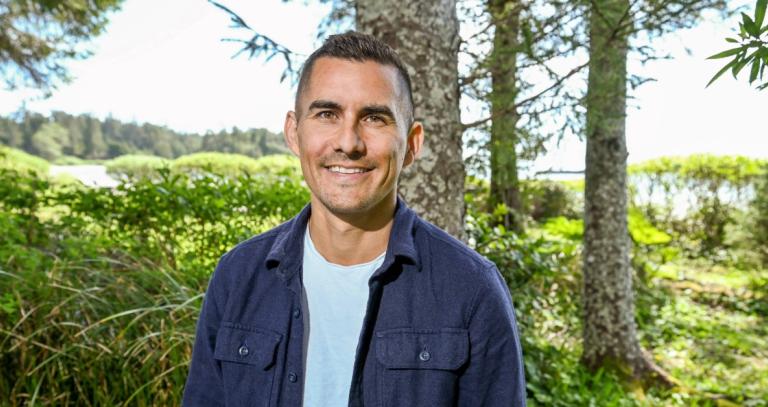
The campus is located on the traditional Lands of the Lekwungen-speaking Peoples, the Songhees and Esquimalt Nations.
With gratitude, we live, work and learn here where the past, present and future of Indigenous and non-Indigenous students, faculty and staff come together.
In honour of the Songhees and Esquimalt ancestors, Hay’sxw’qa si’em (hy-sh-kwa sea-em)! This means, "Thank you, respected or honourable one."
Chief's traditional welcome
Listen to a traditional welcome from Elected Chief Ron Sam of Lekwungen Nation on behalf of the Chiefs of the Songhees Nation and Esquimalt Nation.
Chief's traditional welcome
Land acknowledgments at Royal Roads
Whether you’re a member of our university community, considering attending Royal Roads, or visiting our campus for an event, you’ll find that we practice making Land acknowledgments at the start of meetings, presentations and events.
In these Lands, when a member of a different Indigenous nation visits the lands of another nation, they seek permission, beginning by acknowledging the traditional presence of the nation they are visiting.
Doing this is a small sign of reconciliation — one way that we can affirm the past and present home of the families of these Lands and honour the practice of respectful acknowledgement of their deep ties to it.
Acknowledgment, not welcome
There's an essential difference between the acknowledgment of the Lands and a welcome to the Lands.
Anyone who's a visitor and guest on these Lands can conduct a Land acknowledgment. However, guests and visitors not from the traditional Lands cannot welcome other guests and visitors to the lands.
Follow an example
Royal Roads University is on the traditional Lands of the Lekwungen-speaking Peoples, the Songhees and Esquimalt Nations. With gratitude, we live, work and learn here where the past, present and future of Indigenous and non-Indigenous students, faculty and staff come together.
This phrase may sound scripted, but that's okay. Over time, you'll create an organic and authentic acknowledgment of yourself. Adding your intention and purpose and how being in this place connects to whatever you are doing can help you find your voice.
What to call the Lands
The members of our Heron Peoples Circle and our local Chiefs and Council members prefer that we use the specific names of the families and ancestors when we conduct a Land acknowledgment.
That’s the reason we say "the Lekwungen-speaking Peoples, the Songhees and Esquimalt Nations" at Royal Roads.
We acknowledge that the term "Coast Salish" was coined by immigrant linguists to refer to one branch of the vast Salishan language family. This term is variously accepted by members of the Nations that speak Salishan languages. Both are correct, but it's best to use specific family or Nation names.
Pronunciation
It can be intimidating to say words we don’t know how to pronounce in any language. It’s also not uncommon for immigrant descendants and immigrants to worry that they might offend Indigenous Peoples if they say a Nation or place name wrong. Members of the Heron Peoples Circle tell us that they appreciate it when people try. They also recommend asking someone who knows how to say the names the way community members do, especially an Indigenous person from the place.
Nothing replaces hearing these words spoken by members of these communities, but here is a pronunciation guide for our local Nations:
- Songhees (song-eez)
- Esquimalt (es-kwai-malt)
- Lekwungen (lekwun-gen)
- Pacheedaht (pa-chee-dat)
- Pauquachin (paw-kwi-chin)
- Scia’new (chee-a-new)
- Tsartlip (sart-lip)
- Tsawout (say-out)
- Tseycum (say-come)
- Xwsepsum (ko-sap-sum)


